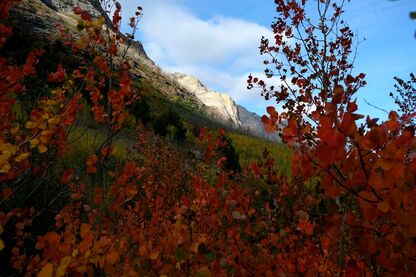 The Northern Pygmy Owl is one of the smallest owls in the US, and has been spotted at Galena Creek Regional Park! Photo: All About Birds The Northern Pygmy Owl is one of the smallest owls in the US, and has been spotted at Galena Creek Regional Park! Photo: All About Birds Owls are fierce predators and unique in the bird world for several reasons. 1. The first and most obvious adaptation is that they are nocturnal, although this isn’t always true. Most owls are active in catching and eating prey at night but many are still awake during the day. Some owls, like the Northern Pygmy Owl and the Burrowing Owl, are primarily active during the day. 2. They have fringed flight feathers that muffle sound and allow them to fly almost silently. This helps them sneak up and surprise prey. This adaptation is complemented by their strong talons, which help them hold on to large prey. 3. Another well-known adaptation is their flexible head; owls can turn their heads up to 270° to track their prey by sight and sound. 4. Finally, owls are similar to other predators in that their eyes are placed at the front of their head (as opposed to the sides like most songbirds and prey animals); this adaptation improves their depth perception, helping them track and catch prey. Prey animals have eyes on the sides of their heads because that increases their field of vision, allowing them to see predators and other threats. What other owl adaptations can you think of? More Information: Owl Research Institute
5 Comments
 The Aspens in the Ruby Mountains in Eastern Nevada have already taken on various shades of yellow, orange, and red! The Aspens in the Ruby Mountains in Eastern Nevada have already taken on various shades of yellow, orange, and red! We’re answering the age old question today: why do leaves turn orange, yellow, and red in the fall? Most people know that it has something to do with chlorophyll and seems to correspond with trees losing their leaves for winter. And all those things are true, but let’s break down the whole process. Leaves have chlorophyll, a green-blue pigment; that’s what makes leaves green and that’s what allows plants to photosynthesize. But leaves also contain lots of other pigments, like keratinoids (orange/brown) and xanthophylls (blue/purple/red). The relative proportions of these other pigments determines how leaves change color in the fall. Some species (and even some individuals or populations of a given species) have high concentrations of carotenoids, and in the fall they turn yellow or orange and then brown and fall off. Other species (or individuals) have higher concentrations of xanthophylls and turn that brilliant red or even purple. Aspens are a great example of the chemical variation between individuals and populations. The aspens in Galena Creek turn a fiery orange in autumn; aspens in other areas turn yellow, and other populations even turn red! The nutritional composition of the soil and the specific genetics of a population will determine autumn colors. So, take your friends out to Galena Creek in mid-October to see the beautiful aspens, and make sure you drop the word “xanthophyll” in conversation! |
AuthorThis blog is managed by the staff and volunteers of Galena Creek Visitor Center. We write about parts of the natural world that we find fascinating and want to teach others about, as well as keeping you updated on the Visitor Center and park. If you want to learn more, please sign up for our monthly newsletter, where we share upcoming events, updates on the ecology of the park, and highlights from each month. Archives
October 2021
Categories |
 RSS Feed
RSS Feed
